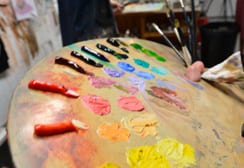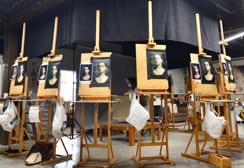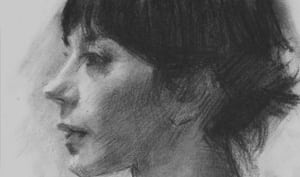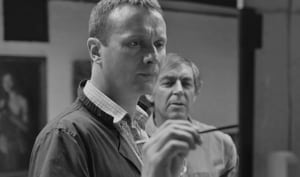Step 2: Blocking in the Darks and Large Areas of Colour – Portrait of Lisa
Blocking in the darks and large areas of colour. With the drawing in place, it’s time to start blocking in the major areas of tone and colour while setting the darkest values. This stage establishes the overall structure of the portrait before refining details.
- Establish the Darkest Darks
• Start by identifying and painting the deepest shadows—this sets the tonal range for the entire portrait.
• Keep the paint thin and transparent in the shadows to maintain depth and avoid a heavy, muddy look. - Block in Large Areas of Shadow
• Simplify and group shadow shapes together rather than breaking them into small details.
• Subtly feather the edges where shadows transition into light. - Group Large Areas of Colour
• Focus on broad colour relationships rather than small variations.
• The background and hair play a crucial role—adjust their tones to balance the colours of the face.
• Work with big brushes at this stage to avoid getting lost in detail too soon. - Brushwork and Edge Control
• Keep shadows soft and subtle, with lost edges where necessary.
• In areas of form shadow (e.g., under the jaw, eye sockets), use delicate transitions to avoid harsh separations.
• For harder edges, such as a strong cast shadow, use a firmer brush and more defined strokes.
At this stage, aim for general accuracy in tone and colour relationships—details will be refined later.






